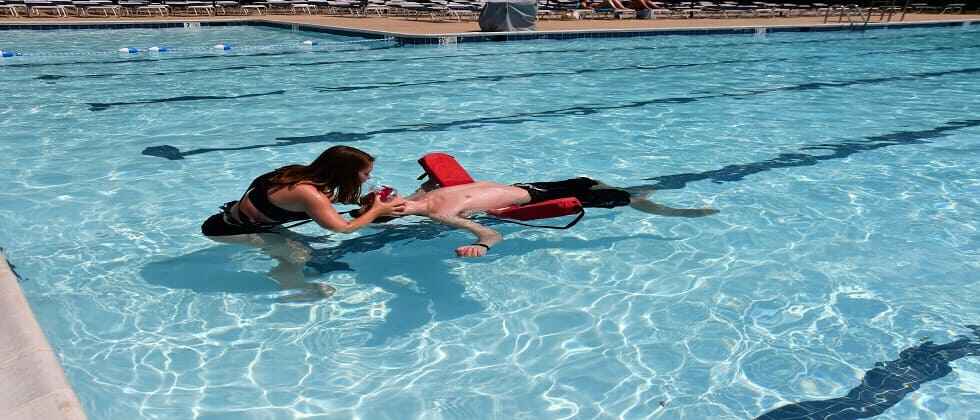Enrolling in a lifeguard class is the first step towards a rewarding and impactful role in ensuring safety at pools, beaches, and waterparks. As an aspiring lifeguard, it’s essential to understand the specific requirements and prerequisites needed to enroll in a lifeguard training course. American Lifeguard USA, a premier provider of lifeguard certification and training, offers comprehensive courses designed to equip individuals with the necessary skills and knowledge.
This article will guide you through the essential requirements and expectations for enrolling in a lifeguard class.
Age Requirements
One of the primary prerequisites for enrolling in a lifeguard class is meeting the minimum age requirement. American Lifeguard USA typically requires candidates to be at least 15 years old by the last day of the course. This age requirement ensures that participants have the maturity and physical capability to handle the responsibilities of lifeguarding.
Some advanced courses or specific certifications, such as for waterfront lifeguarding, might have different age requirements, so it’s essential to check the specific course details.
Physical Fitness and Swimming Skills
Lifeguarding is a physically demanding job that requires a high level of fitness and proficient swimming skills. American Lifeguard USA mandates that all candidates pass a pre-course swimming test. This test typically includes:
Swimming a specific distance: Candidates must swim continuously for 300 yards (12 laps in a standard 25-yard pool) using front crawl or breaststroke. This swim demonstrates endurance and efficiency in the water.
Timed swim: Candidates must swim 20 yards, retrieve a 10-pound brick from a depth of 7-10 feet, and return to the starting point holding the brick within a set time (usually 1 minute and 40 seconds). This test evaluates strength, underwater swimming ability, and the capability to carry a weight while swimming.
Treading water: Candidates must tread water for 2 minutes using only their legs. This exercise assesses the ability to stay afloat without the use of arms, which is critical for lifeguarding scenarios where hands may be occupied with rescue equipment or assisting a victim.
These swimming tests ensure that candidates have the foundational swimming and water skills necessary for effective lifeguarding.
How to become a certified lifeguard
Do you think you have the skills it takes to be a first responder? In this publication we explain how to be a lifeguard or lifeguard, as these young men and women are also known who supervise, from the top of the lifeguard towers, the activities of national and foreign tourists on beaches, swimming pools, and water parks; to ensure swimmers of all ages are safe.
If you like to protect bathers, surfers, and swimmers from dangerous water conditions. You are passionate about teaching beachgoers the swimming rules they should follow, and you are willing to train in lifesaving techniques that you would apply when necessary; So, is this a good profession for you? We invite you to continue reading and learn how to be a lifeguard.
CPR and First Aid Certification
Lifeguards are often the first responders in emergencies, making CPR (Cardiopulmonary Resuscitation) and First Aid skills crucial. American Lifeguard USA requires that candidates either possess current CPR and First Aid certifications or obtain them during the lifeguard training course. The training covers:
CPR for adults, children, and infants: Learning how to provide effective chest compressions and rescue breaths.
Using an Automated External Defibrillator (AED): Understanding how to operate an AED, a vital piece of equipment in cardiac emergencies
First Aid skills: Handling common injuries and medical emergencies, such as cuts, burns, fractures, and allergic reactions.
What lifeguards do
The job of lifeguards is to keep people safe in and around the water. They are trained to detect the safety of the waters and ensure that safe practices are followed by enforcing the rules for bathers. They can also handle emergencies related to water and sand sports or pool areas and water parks.
Steps to become a certified lifeguard
There are no formal education requirements for lifeguards beyond training and certifications. That is why it is an attractive option for many students.
Lifeguard requirements typically include a high school diploma or its equivalent.
The lifeguard certification process involves taking one of several available programs; to verify that aspiring lifeguards are good swimmers, in addition to being trained in CPR and first aid.
Continuous Education and Recertification
Becoming a certified lifeguard is not a one-time achievement. Lifeguards must stay updated with the latest techniques and maintain their certifications. American Lifeguard USA offers recertification courses to ensure that lifeguards continue to meet the high standards required for the role. Recertification typically involves:
Refresher training: Updating skills and knowledge, especially any new or revised lifeguarding protocols.
Renewing CPR and First Aid certifications: Keeping these critical certifications current.
Practical evaluations: Demonstrating continued proficiency in water rescue and emergency response skills.
Conclusion
Enrolling in a lifeguard class with American Lifeguard USA requires meeting specific age, physical fitness, and swimming skill requirements. Candidates must also possess or obtain CPR and First Aid certifications, complete a comprehensive lifeguard training course, and exhibit the necessary personal attributes and mindset for the role. By fulfilling these requirements, you will be well-prepared to embark on a rewarding career as a lifeguard, playing a vital role in ensuring the safety and well-being of swimmers and beachgoers. Lifeguarding is more than a job; it’s a commitment to protecting lives and making a difference in your community.





